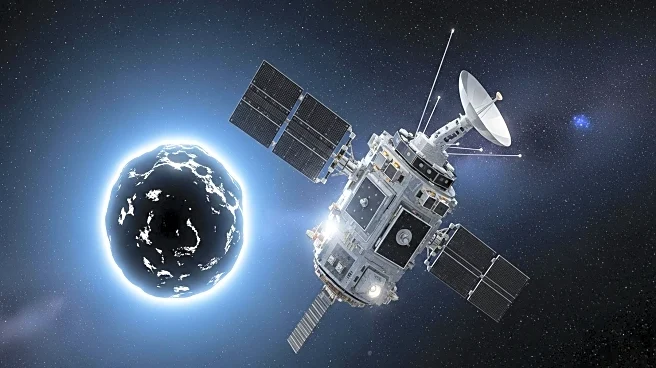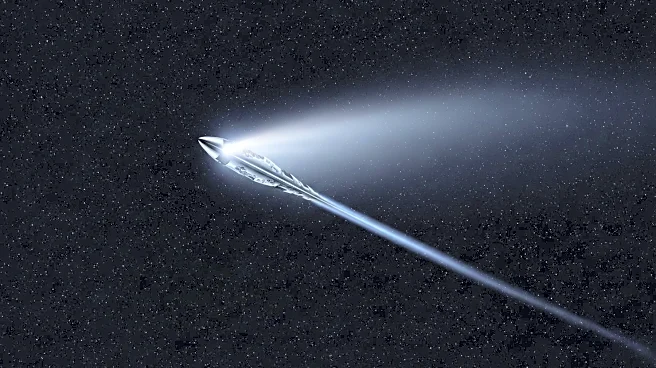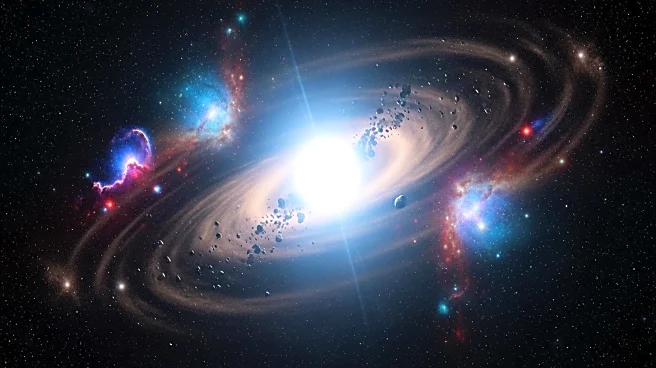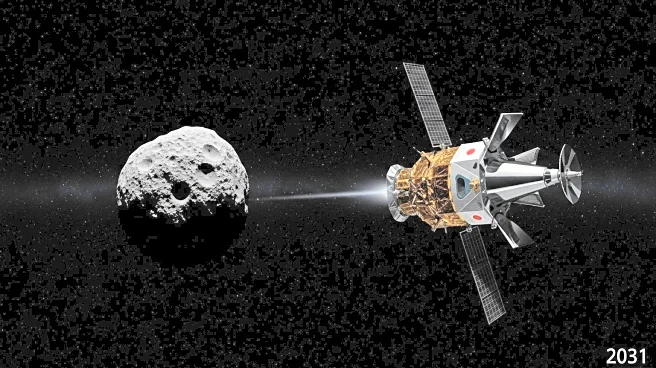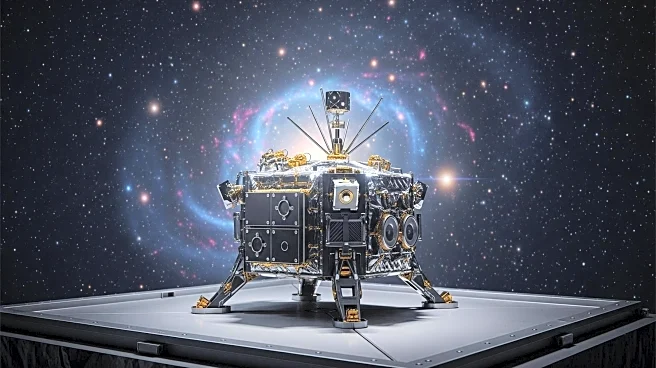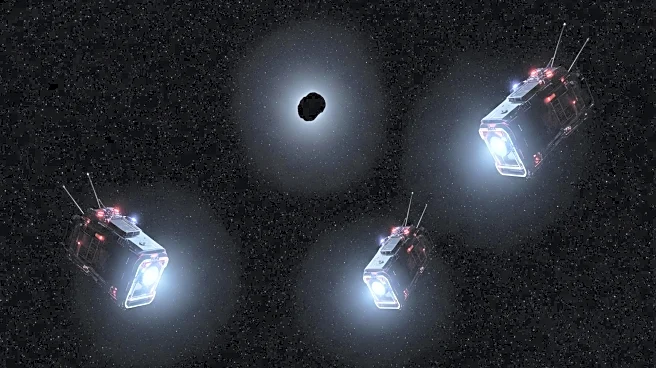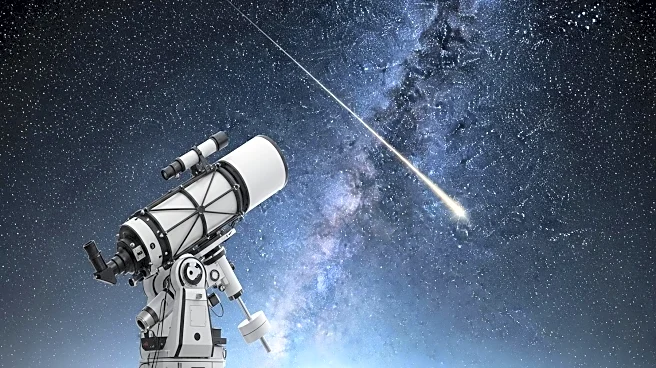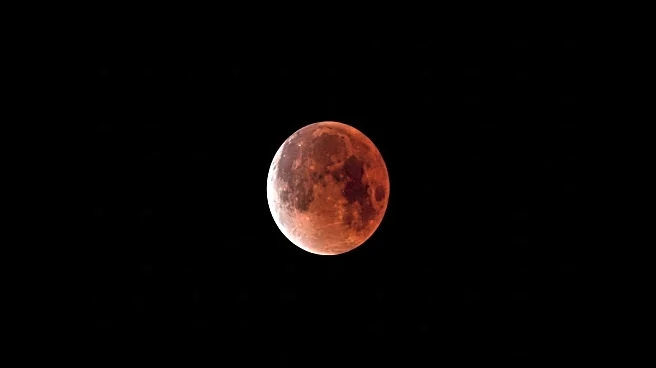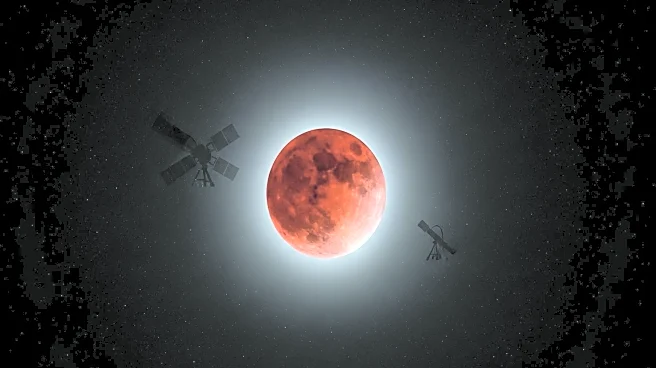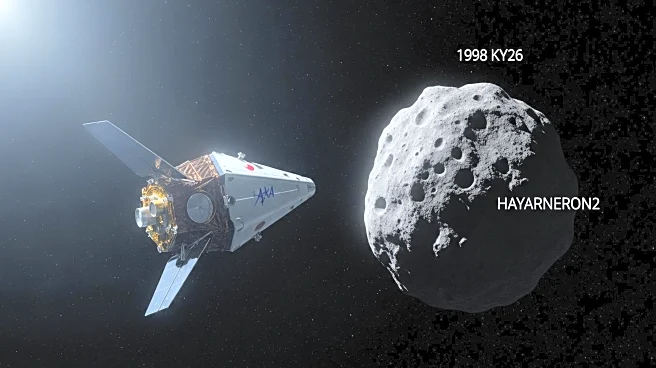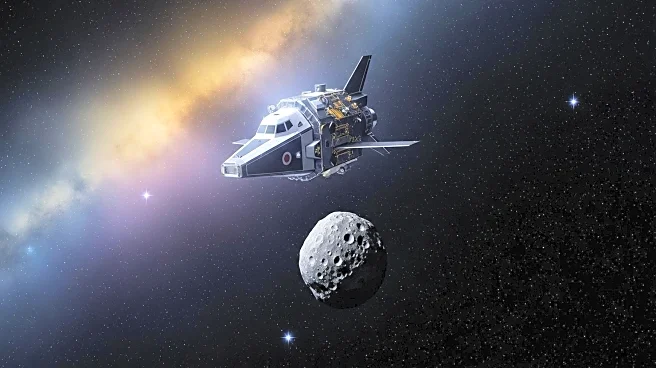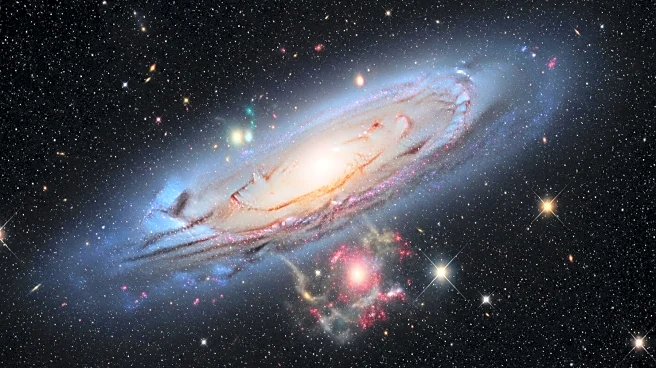What is the story about?
What's Happening?
Asteroid 99942 Apophis, known as the 'God of Chaos,' is set to pass approximately 20,000 miles above Earth's surface on April 13, 2029. This event will be visible to billions across Africa and Europe. Despite initial fears of a collision, astronomers have confirmed there is no impact risk. Space agencies from the US, Europe, and Japan are preparing missions to study Apophis during its flyby. NASA's OSIRIS-APEX, ESA's RAMSES, and JAXA's DESTINY+ will analyze the asteroid's orbit, structure, and any changes caused by Earth's gravity.
Why It's Important?
The flyby presents a unique opportunity for scientific research and planetary defense. Apophis's close approach will allow scientists to refine asteroid impact models and study the effects of Earth's gravity on its trajectory. This event is considered a 'once-in-a-millennium' chance to advance planetary science. The data collected will enhance understanding of asteroid dynamics and improve future impact prediction models, contributing to global efforts in planetary defense.
What's Next?
The three space missions will provide detailed observations of Apophis during its flyby. NASA's OSIRIS-APEX will map the asteroid's surface and monitor changes post-flyby. ESA's RAMSES will track Apophis's orbit and deploy CubeSats for seismic measurements. JAXA's DESTINY+ will analyze dust and particles around Apophis. These missions will collectively offer comprehensive insights into the asteroid's behavior and properties.
Beyond the Headlines
The event underscores the importance of international collaboration in space exploration and planetary defense. It highlights advancements in tracking and predicting asteroid paths, turning potential threats into research opportunities. The study of Apophis will contribute to the development of strategies to protect Earth from future asteroid impacts.
AI Generated Content
Do you find this article useful?
